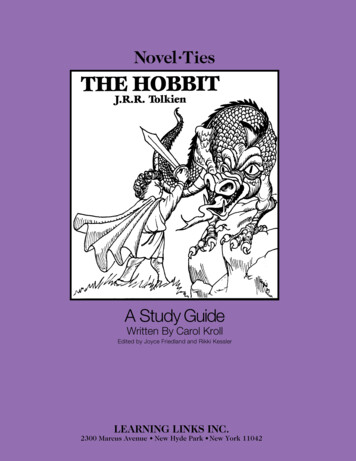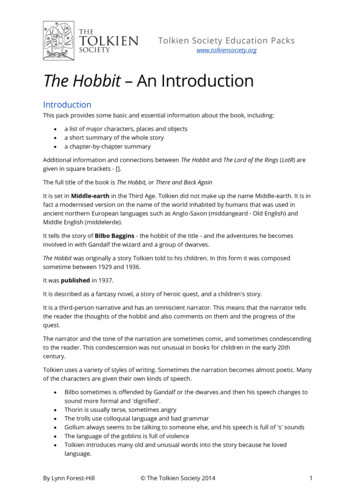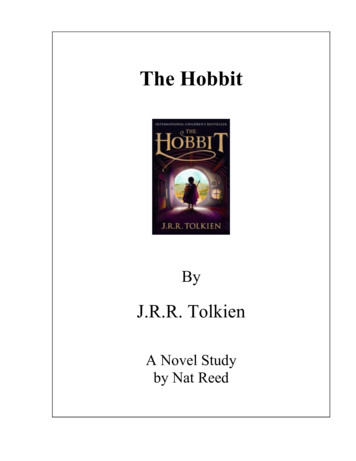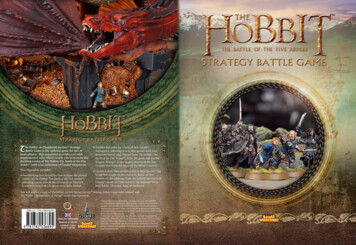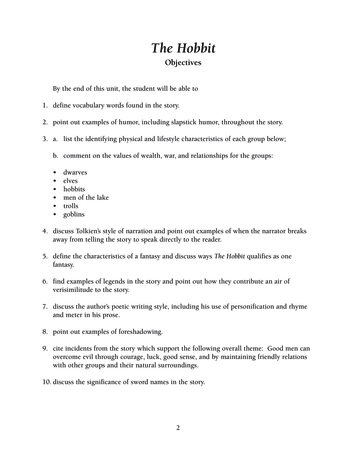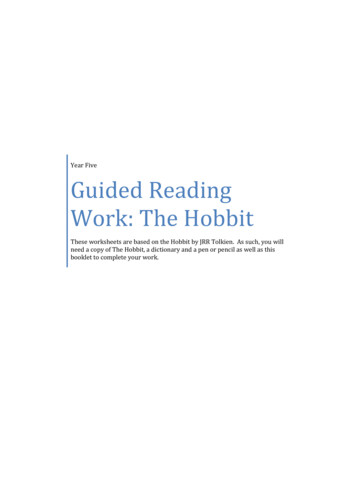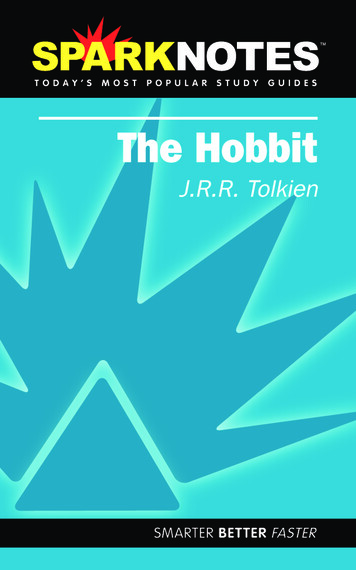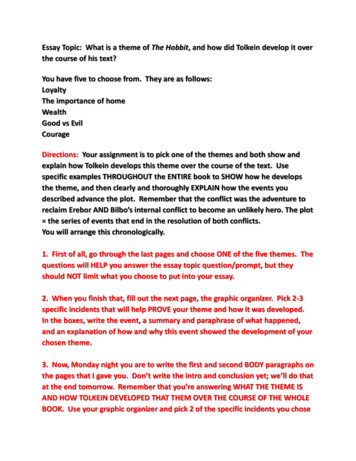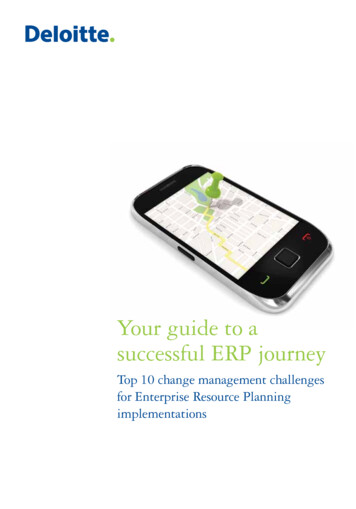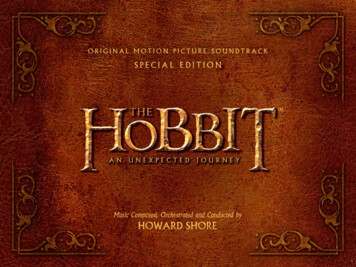
Transcription
1
2
3
Score Produced by HOWARD SHOREExecutive Album Producers: PETER JACKSON, FRAN WALSH and PHILIPPA BOYENSMusic Composed, Orchestrated and Conducted by HOWARD SHOREScore Performed by LONDON PHILHARMONIC ORCHESTRA, LONDON VOICES, TIFFIN BOYS’ CHOIRMusic Recorded by SIMON RHODES, PETER COBBIN, SAM OKELLMusic Mixed by PETER COBBIN, SAM OKELLSupervising Score Editor: JONATHAN SCHULTZMusic Programmer and Conformer: JAMES SIZEMOREMusic Editors: JENNIFER DUNNINGTON, MICHAEL PÄRTRecorded Score Editors: KIRSTY WHALLEY, ROB HOUSTON, YANN MCCULLOUGHProduction Manager: ELIZABETH COTNOIRMusic Supervisor: KAREN ELLIOTTProduction Coordinator: ALAN FREYAccounting: RICH PALECEKMusic Preparation Supervisor: AMY BAERMusic Preparation: JILL STREATER, VIC FRASER, ANN BARNARD, DAVID GILL, JOSHUA GREEN,JEREMY HOWARD BECK, ANDREW TOWNEND, JAMES MARANGONEStudio Manager: COLETTE BARBEREngineer Assistants: JOHN BARRETT, GORDON DAVIDSON, MATT MYSKO, TOBY HULBERTNew Zealand Music Editors: MARK WILLSHER, STEPHEN GALLAGHER, NIGEL SCOTTLondon Music Editor: LAURENCE LOVE GREEDAuricle Operator: PETER CLARKEAssistant Music Programmer: ANTONIO ANDRADEAssistant to the Conductor: THEO VIDGENAssistant to the Orchestrator: DANIEL MCCALLUMLPO Artistic Director: TIM WALKERChoir Directors: TERRY EDWARDS, BEN PARRY, SIMON TOYNEContractors: ISOBEL GRIFFITHS, GRAHAM WOODAssisted by JO BUCKLEY, LUKE DANIELSConcertmasters: PIETER SCHOEMAN, THOMAS BOWESMusic Recorded, Mixed and Mastered at ABBEY ROAD STUDIOSAlbum Mastered by PETER MEWAlbum Edited by YANN MCCULLOUGH, JONATHAN SCHULTZAlbum Coordinator: ALAN FREYPhotos: JAMES FISHER, MARK POKORNY (Stills), BENJAMIN EALOVEGA (Artist and Session Photos)Executives in charge of Music for Warner Bros. Pictures: PAUL BROUCEK and ERIN SCULLYExecutive in charge of Music for WaterTower: JASON LINNMusic Business Affairs Executive: LISA MARGOLISArt Direction: SANDEEP SRIRAM4
Special Thanks from Howard Shore to: Peter Jackson, Fran Walsh, Philippa Boyens, Paul Broucek, Erin Scully, Zane Weiner, Josh Levinson, MattDravitzki, Robert Messinger, Jeffrey Light, Jean-Jacques Cesbron, Elizabeth Cotnoir, Simon Rhodes, Peter Cobbin, Sam Okell, Peter Mew,Jonathan Schultz, Jennifer Dunnington, Michael Pärt,Yann McCullough,Alan Frey, James Sizemore,Amy Baer, Doug Adams, Karen ElliottSpecial Thanks from WaterTower Music to: Peter Jackson, Fran Walsh, Philippa Boyens, Carolynne Cunningham, Zane Weiner, EileenMoran, Toby Emmerich, Carolyn Blackwood, Alan Horn, Ken Kamins, Barry Meyer, Jeff Robinov, Ed Romano, Bruce Rosenblum,Kevin Tsujihara, Dan Fellman, Sue Kroll, Steve Papazian, Craig Alexander, Kate Beyda, David Blaikley, Roy Button, Charles Light,Robyn Martin, Blair Rich, Jay Rosenwink, Susannah Scott, Marc Solomon, Gary Barber, Al Bendich, Roger Birnbaum, MalcolmBlack, Peter Cobbin, Elizabeth Cotnoir, Brian Crowe, Nour Dardari, Matt Dravitzki, Fredrica Drotos, Jennifer Dunnington, BenEalovega, Karen Elliott, Alan Frey, Stephen Gallagher, Chris Gough, Stephen King, Josh Levinson, Jeffrey Light, Robert Messinger,Frank Noonan, Sam Okell, Michael Pärt, Michael Pellerin, Plan 9 - David Donaldson, David Long, Steve Roche and Janet Roddick,Simon Rhodes, Gene Salomon, Jonathan Schultz, Amanda Walker, Sara White, Christiaan Winchester, Mark Willsher, Paul ZaentzWaterTower Music Thanks to: Peter Axelrad, Kim Baum, Rocco Carrozza, Deborah Fox, Michael Hafitz, Kim Guggenheim, Joe Kara,Kevin Kertes, Lucy Kolodynska, Ny Lee, Kris Little, Genevieve Morris, Jaimie Roberts, Lori Silfen, John F.X. Walsh, Robert ZickDecca special thanks to: Dickon Stainer, Jackie Joseph, Hassan Choudhury, Andy Daymond, Tom Lewis, Marc Robinson, Mike Bartlett,Kevin Long, James Torniainen, Louise Ringrose, Laura Monks, Renata Chagrin, Nadina Challoner, Alex McCulloch, Darren Rumney,Charlie Farmer, Liz Trafford-Owen5
Score published by New Line Tunes (ASCAP) and U/A Music Inc (ASCAP)All compositions by Howard Shore (ASCAP) except:Portions of Disc 1: Tracks 8, 12; Disc 2: Tracks 5, 17 contain excerpts of the“Misty Mountains” song composed by David Donaldson, David Long, Steve Roche andJanet Roddick.“Blunt the Knives”Lyrics by J.R.R. Tolkien · Music Composed by Stephen Gallagher · Performed byJed Brophy, Adam Brown, John Callen, Mark Hadlow, Peter Hambleton, StephenHunter, William Kircher, Graham McTavish, James Nesbitt, Dean O’Gorman, KenStott, Aidan Turner · Produced by Stephen Gallagher · Mixed by Ed Cherney· Published by New Line Tunes (ASCAP) and U/A Music Inc (ASCAP) ·2012 Warner Bros. Entertainment Inc. and Metro-Goldwyn-Mayer Pictures Inc.“Misty Mountains”Lyrics by J.R.R. Tolkien · Music Composed by David Donaldson, David Long, Steve Rocheand Janet Roddick · Performed by Richard Armitage With Jed Brophy, Adam Brown,John Callen, Mark Hadlow, Peter Hambleton, Stephen Hunter, William Kircher, GrahamMcTavish, James Nesbitt, Dean O’Gorman, Ken Stott and Aidan Turner · Producedby Plan 9 and David Long · Mixed by Ed Cherney · Published by New Line Tunes(ASCAP) / U/A Music, Inc (ASCAP) / Native Tongue Music Publishing (ASCAP)·2012 Warner Bros. Entertainment Inc. and Metro-Goldwyn-Mayer Pictures Inc.“Song of the Lonely Mountain”Lyrics by Neil Finn · Music Composed by Neil Finn, David Donaldson, Steve Roche, JanetRoddick and David Long · Performed Neil Finn · Produced by Neil Finn, Elroy Finn, LiamFinn · Mixed by Dave Fridmann · Recorded and engineered by Jason Huss at Roundhead· Strings performed by the London Metropolitan Orchestra · Conducted by James Brett· Orchestra Leader: Tom Kemp · Strings Recorded and Mixed by Lewis Jones · AssistantEngineer: Toby Hulbert · Strings Arranged by Victoria Kelly · Published by New LineMusic Co (BMI) / Roundhead Music admin by Songs of Kobalt Music Publishing (BMI)/United Lion Music, Inc (BMI) / New Line Tunes (ASCAP) / U/A Music, Inc (ASCAP)·2012 Warner Bros. Entertainment Inc. and Metro-Goldwyn-Mayer Pictures Inc.Choral Text by Philippa Boyens except:“The Eagles” Text by J.R.R. Tolkien and Philippa BoyensChoral Text Translations by David SaloLiner Notes Original Text Copyright 2012 Doug AdamsP & C 2012 WaterTower Music, 4000 Warner Blvd., Burbank, CA 91522 under exclusivelicense to Decca, a division of Universal Music Operations Limited. Motion PictureArtwork C2012 Warner Bros. Entertainment Inc. Motion Picture Photography C 2012Warner Bros. Entertainment Inc. and Metro-Goldwyn-Mayer Pictures Inc. (US, Canada& New Line Foreign Territories) C2012 Metro-Goldwyn-Mayer Pictures Inc. andWarner Bros. Entertainment Inc. (All Other Territories). The Hobbit: An UnexpectedJourney and The Hobbit, names of the characters, events, items and places therein,are trademarks of The Saul Zaentz Company d/b/a Middleearth Enterprises underlicense to New Line Productions, Inc. All rights reserved. Unauthorised copying,reproduction, hiring, lending, public performance and broadcasting prohibited.6
“Blunt the Knives”Blunt the knives, bend the forksSmash the bottles and burn the corksChip the glasses and crack the platesThat’s what Bilbo Baggins hates!Cut the cloth, tread on the fatLeave the bones on the bedroom matPour the milk on the pantry floorSplash the wine on every door!Dump the crocks in a boiling bowlPound them up with a thumping poleWhen you’re finished if they are wholeSend them down the hall to roll!“Misty Mountains”Far over the Misty Mountains coldTo dungeons deep and caverns oldWe must away ere break of day,To find our long-forgotten goldThe pines were roaring on the heightThe winds were moaning in the nightThe fire was red, it flaming spreadThe trees like torches blazed with lightThat’s what Bilbo Baggins hates!7
8
“Song of the Lonely Mountain”Far over the Misty Mountains riseLeave us standing upon the heightsWhat was before, we see once moreOur kingdom a distant lightFiery mountain beneath the moonThe words unspoken, we’ll be there soonFor home a song that echoes onAnd all who find us will know the tuneSome folk we never forgetSome kind we never forgiveHaven’t seen the back of us yetWe’ll fight as long as we liveAll eyes on the hidden doorTo the Lonely Mountain borneWe’ll ride in the gathering stormUntil we get our long-forgotten goldWe lay under the Misty Mountains coldIn slumbers deep and dreams of goldWe must awake, our lives to makeAnd in the darkness a torch we holdFrom long ago when lanterns burnedTill this day our hearts have yearnedHer fate unknown the ArkenstoneWhat was stolen must be returnedWe must awake and make the dayTo find a song for heart and soulSome folk we never forgetSome kind we never forgiveHaven’t seen the end of it yetWe’ll fight as long as we liveAll eyes on the hidden doorTo the Lonely Mountain borneWe’ll ride in the gathering stormUntil we get our long-forgotten goldFar away from Misty Mountains cold9
10
11
The Hobbit: An Unexpected Journey returns composer Howard Shore to the London Philharmonic Orchestra and the compositional worldhe established in The Lord of the Rings. Shore’s sweeping score to The Lord of the Rings followed an operatic model by establishing anencyclopedic network of leitmotifs: dozens of themes that represented cultures, characters, objects, and dramatic concepts in Middleearth. This stirring opus is both expanded and returned to its foundations in the composer’s score to The Hobbit. “I have looked forward toreturning to the imaginative world created by J.R.R. Tolkien for quite a while. I read all of Tolkien’s books, including The Hobbit, when I wasin my twenties,” says Shore. “Tolkien’s deep love of nature and all things green resonates deeply with me.”Sixty years before The Fellowship of the Ring, Bilbo Baggins lives a life full of comfort — and utterly devoid of adventure. The music of the Shire,the Hobbits’ verdant home, is never more lush or peaceful than it is in Bilbo’s younger days. The land is painted in the sweet green tones ofa stepwise theme, and is adorned by folk instruments such as penny whistle, recorders, concertina, musette, mandolin, dulcimer, guitar, andbodhrán. But the quaint plainness of Bilbo’s life ceases when a wandering Wizard comes calling.Gandalf the Grey is better known in the Shire for his fireworks than for his wizardry. Mere mention of his name evinces a sprightly recurringtheme for his beloved pyrotechnics. But this trip to the Shire has been precipitated by Gandalf’s search for “someone to share in an adventure.”He brings with him, this time, his own theme — a gentle turn that rarely exceeds a subdued mezzo forte dynamic level and is orchestrated forlight woodwinds, French horn, or violins. Gandalf’s theme is unassuming yet subtly disruptive. Like the Shire, it is built on simple pitches; butwhere the Hobbits’ music forms linear patterns, Gandalf’s theme twists and curls over ambiguous harmonies. It is a musical nudge out of thedoor — a phrase that opens the Shire music to a mysterious new development.As Gandalf marks Bag End with a rune, the Shire theme is stretched over minor harmonies better suited to a Wizard than a Hobbit(B minor–G minor). It is the first time this variation has appeared in the Shire, but it will not be the last, for it becomes synonymous with Bilbo’s“odd” behavior. But how could he behave otherwise? Alerted by the Wizard’s mark — and accompanied by a touch of uilleann pipes — a throngof hungry Dwarves soon comes trundling into Bag End to blunt the knives and crack the plates. The Dwarves, however, intend to assault morethan Bilbo’s cutlery. Led by Thorin Oakenshield, the company has assembled to plot their return to the lost kingdom of Erebor. Gandalf hasdecreed that Bilbo is to join the Dwarves’ quest as their resident burglar — despite his complete lack of burgling experience. Bilbo protests thathe is a Baggins, and thus better suited to plush chairs and musty books. But Gandalf knows that the son of Belladonna Took is tempted by theopportunity to see the world beyond his windows.Bilbo will always be a citizen of the Shire, and its theme will always define him. The pull-and-push inherent in Bilbo’s dual natures creates aunique two-part variation of the Shire theme that stretches its pentatonic-flavored harmonies into something more expressive and thoughtful.For better or worse, Bilbo is no ordinary Hobbit. The first half of his theme wraps itself tightly in safe, warm harmonies and cozy melodiccontours. However, after a subtle harmonic turn, the theme moves into a new key and exposes Bilbo’s emerging thirst for excitement with leapingintervals and a stout, confident tone.12
13
14
The Dwarves, too, are defined by their homeland. Long ago, under the leadership of Thrór, King Under the Mountain and grandfatherto Thorin Oakenshield, Erebor was a place of great wealth and power depicted by a proud, compact figure rising in three horn-calls,but remaining stubbornly affixed to its root (A–C; A–D; A–E). Most cherished among Thrór’s treasures was the Arkenstone, a luminouswhite gem matched to a glowing choral cluster and a stately string line in B minor. Word of Thrór’s riches soon reached Smaug theDragon, who attacked Erebor, ousted the Dwarves, and claimed their golden hoard as his own. Countless Dwarves were left to wanderthe wilderness; their once-mighty race brought low.Thorin has taken it upon himself to right this wrong. His theme directly recalls Erebor’s, though it moves by bitter steps, not proudleaps. As a lonely French horn melody passes above A minor and G major harmonies, Thorin’s resolve is painted with a sense of longingand melancholy. His theme expresses grim determination and the soul of a Dwarf who cannot forgive and cannot forget. Yet nestled inthe noble remorse of Thorin’s theme there is hope: the stepwise motion that opens his theme is the same that begins the Shire theme.Perhaps there is more to the Dwarves’ new burglar than meets the eye — perhaps the quest for Erebor is not in vain.Still, if Erebor is to be retaken, Smaug must be defeated. Shore’s theme for Smaug heaves like the bellows of a great furnace.Low brass and divisi celli and basses deliberately alternate between major and minor iterations of the same pulsing chord(F major–F minor–F major– F minor). Bass drum and Tibetan gongs rumble and clatter while low harp quivers withimprovised patterns. Above this, winds and strings play a line that worms through chromatic intervals with an exotic gleam15
(E–E–F–A ; E–F–A –A –A –C ). The Dragon still lies far to the east, however, and before the Dwarves can reach him, a long journeyawaits. With their burglar Hobbit in tow, Thorin’s company sets out from Bag End accompanied by Shore’s bold setting of the“Misty Mountains” song (composed by Plan 9 and David Long) — and by a comic triple-beat clarinet figure in D minor thatrepresents Bilbo’s fussy inflexibility.On the road, Gandalf explains that he is not the only Wizard in Middle-earth. Radagast the Brown lives along the southern bordersof Mirkwood where he cares for the flora and fauna as if they were his own. Radagast’s theme is a whir of perpetual motion — anoscillating flow of sawing half steps, rapid arpeggios, and swirling trills enrobed in disheveled fragments of diminished harmonies.Light percussion pecks away with accompanimental sextuplets on shakers, gourds, and woodblocks, while low strings and winds bubbleupward. Above this dense collection of forest murmurs, boys chorus sings a text by Phillippa Boyens: “Meno, edveno / O galad vos ilais / Lim, meno lim / Na fuin, trí dhuaith ” (“Away! Away! / From soft leaf-light / Hurry! Hurry! / Through dark of night ”).Radagast’s perpetual motion serves a purpose: a Necromancer now haunts Middle-earth. Little is known of this sorcerer, but there isa disturbingly familiar ring to his themes. The Necromancer and his lair are first represented by two heavy motifs. The first is a pairof descending major thirds, and the second is a rising trellis of three ascending pitches that evades downbeats. Low winds announcethese ominous figures while timpani, Japanese taiko, and the West African dunun drum thunder in the percussion section. But theseponderous figures are followed by a wailing line for two oboes and cor anglais that rises a strident half step, then descends through16
17
augmented intervals to form the theme of the Necromancer. The exotic tone of the Necromancer’s theme calls to mind the early days ofMiddle-earth, but there is a more treacherous connection as well: the same pitches that form this theme also form the string line that perchesatop Smaug’s theme.Smaug is yet uncommitted to any cause but his own, and remains a distant threat. A more immediate peril is the pack of Orcs that huntsthe Dwarves. A theme for low brass stalks the forest alongside the barbaric horde. It is the second theme in the score to comprise a pair ofdescending thirds — though a fifth pitch falls an additional half step and clatters in aleatoric patterns (G–E –F–D–D ). The fatalistic line is sharp,vicious, and unrelentingly predatory.Not all of the Dwarves’ enemies are so cunning, however. In the forest, Bilbo encounters a trio of Trolls: crude behemoths who have stolen a pairof the Dwarves’ ponies and plan to make a meal of their prize. Bilbo is assigned the responsibility of retrieving the ponies, but he is no morea hero than he is a burglar. While his triple-meter D minor theme protests, Bilbo does his best to enact a rescue, but he only manages to makethe situation worse. The Trolls, too, are represented by a theme in triple meter — a grunting ‘waltz humoresque’ that becomes less amusing as itprogresses from delicate pizzicato strings to low reeds and menacing brass.Even at its most threatening, the music of the Trolls is blunt and brutish. By contrast, the music of the Wargs is sleek, lean, and sharp as anarrow. Over repeated eighth notes, four-note patterns in E minor simultaneously rise and fall, snapping tight like the jaws of the wolf-like beasts.Tromping figures for piano and taiko underpin snarling brass fanfares, and the orchestra races through a breathless presto that threatens toovercome the weighty music of the Dwarves.Gandalf eventually leads the Dwarves to the safety of Imladris, the Last Homely House and home to Elrond, Master of Rivendell. Rivendell’stimeless music is embellished with tolling chimes, harp glissandi, and female voices singing “Rivendell Revealed” in Sindarin, the Elves’ commontongue. However, Elrond is not the only Elf to hold sway in Rivendell — and Gandalf is not the only Wizard. Also present are Galadriel, theLady of Lórien, and Saruman, wisest of his order. While the Dwarves accept the invitation issued in Rivendell’s choral text — “Edwenno brestaiden-Amar” (“Lay down your troubles, set aside your fear”) — Elves and Wizards gather for the White Council.Galadriel’s theme guides cor anglais though an adapted m qam hijaz, an elegant Arabic mode, while string harmonics and monochord softly pulse.Female chorus sings: “Ninque sile mise nár / Nóna silme andané” (“A white fire shines within her / The light of a star, born long ago”). Butthe three dark themes associated with the Necromancer cast a pall over Galadriel’s light — and they are joined by a new figure that steals theopening pitches of the Necromancer’s motif and elongates the rising half step, dangling it above the orchestra and sustaining the dissonance aslong as can be endured (B–C). It is a melodic wisp at best, but it hints at an intoxicating power.Bilbo, Thorin, and the Dwarves depart Rivendell and resume their trek eastward over the Misty Mountains. Thunder and lightning flash in thesky and the immense Stone-giants shake to life. Low brass hurtles block chords back and forth while repeated wind and string ostinatos peltdown around them. The company escapes the Giants, but is seized by a host of Goblins whose jittery, bustling rhythms are clotted with dissonantclusters and spit out in growling low orchestrations, gibbering squawks of metal percussion, and untamed meter changes that grow increasingly18
19
20
21
ungainly: three beats, five beats, seven beats, eleven beats. The Dwarves are delivered to the Great Goblin, the slovenly leader of Goblin-town. TheGoblins’ music is a ramshackle collection of skittish angles and unpredictable convulsions. Pinched melodic figures for low winds march throughcrumbling rhythmic accompaniments as the orchestra seems to be in two meters at once, and a chaotic uncertainty takes hold of the score.Elsewhere in the Goblins’ caves, Bilbo encounters a pitifully emaciated figure with a taste for raw flesh. The creature Gollum offers to help Bilbofind his way — if the Hobbit can best him in a game of riddles. If not, Bilbo will become his next meal. Gollum’s presence is dominated byvariations of his principal theme, which endlessly feeds one minor arpeggio into another to create a cyclical sense of wretchedness. As Gollumfocuses his mind toward wicked riddles, a more menacing chromatic line is introduced in tremolo violins and cimbalom — but this too remainsfractured. He is friend and enemy; his riddles are simultaneously impish games and deadly threats. Maddened by time and obsession, Gollumis defined by contradiction.The object of Gollum’s obsession is the simple ring that, in a moment of distraction, he accidentally drops on the floor of his cave. Here, thetwo-note figure from the White Council again sings out, but this time the theme is rounded into a conclusion that hints at a dark power(B–C; B–C–B–A–C–B). The melody line circles back to the same pitches upon which it was first heard, as glittering accompaniments sink fromF minor to E minor. Bilbo may own the ring, but does it own him in return? Its nature — and its power — remains veiled, but the long historyof the ring has begun a new chapter.Bilbo dons the ring and is rendered invisible. Gollum, desperate to reclaim his “Precious,” dashes to the cave’s door and unwittingly shows Bilbothe way out. But Gollum blocks the exit, so Bilbo draws his sword and lifts it to the creature’s throat. He is poised to strike, but the arpeggiatedfigures that have decorated Gollum’s cave momentarily settle back into the same sad theme that played when he first appeared. A pitiful motifpasses from F# minor to B minor as Gollum’s face is wracked with sorrow. Pity stays Bilbo’s hand and, with a leap, he slips away.Bilbo finds something more than the ring in Gollum’s cave: he finds compassion and the courage to carry on. After fleeing Gollum, Bilbo isreunited with the Dwarves, who have likewise evaded their captors with a daring escape through Goblin-town. They may be out of the fryingpan, but they’re thrust suddenly back into the fire when a pack of Warg-riding Orcs arrives. Thorin’s company flees to a row of pine trees, butthe forest burns and the trees crack and splinter. All seems lost until the hard music of battle is parted by a airy minimalistic pattern for violins.The Eagles sweep in to deliver the heroes from danger, and women’s voices enter, filling out the harmony with the soft, natural profile of majorseventh chords.The final moments of An Unexpected Journey are accompanied by a serene dialogue for violins and celli. But low French horns throb with alternatingD major and D minor chords and a sickly plume of violins descends through odd, stretched pitches (F –E ; F –E –D–C ). The Hobbit’s journeyis not finished yet DOUG ADAMSAuthor, The Music of the Lord of the Rings Films22
23
24
25
Music Composed, Orchestrated and Conducted byHOWARD SHOREDISC 11. My Dear Frodo 2. Old Friends (Extended Version) 3. An Unexpected Party (Extended Version)4. Blunt the Knives performed by The Dwarf Cast 5. Axe or Sword?6. Misty Mountains performed by Richard Armitage and The Dwarf Cast 7. The Adventure Begins8. The World is Ahead 9. An Ancient Enemy 10. Radagast the Brown (Extended Version) 11. The Trollshaws12. Roast Mutton (Extended Version) 13. A Troll-hoard 14. The Hill of Sorcery 15. Warg-scoutsDISC 21. The Hidden Valley 2. Moon Runes (Extended Version) 3. The Defiler 4. The White Council (Extended Version)5. Over Hill 6. A Thunder Battle 7. Under Hill 8. Riddles in the Dark9. Brass Buttons 10. Out of the Frying-Pan 11. A Good Omen12. Song of the Lonely Mountain (Extended Version) performed by Neil Finn 13. Dreaming of Bag EndEXCLUSIVE BONUS TRACKS14. A Very Respectable Hobbit 15. Erebor 16. The Dwarf Lords17. The Edge of the WildAlbum Produced by: HOWARD SHORE *Executive Album Producers: PETER JACKSON, FRAN WALSH and PHILIPPA BOYENSExecutives in charge of Music for Warner Bros. Pictures: PAUL BROUCEK and ERIN SCULLYExecutive in charge of Music for WaterTower: JASON LINN* except Disc 1: track 4 Produced by Stephen Gallagher, track 6 Produced by Plan 9 and David Long, Disc 2: track 12 Produced by Neil Finn, Elroy Finn, Liam FinnP &C 2012 WaterTower Music, 4000 Warner Blvd., Burbank, CA 91522 under exclusive license to Decca, a division of Universal Music Operations Limited. Motion Picture Artwork C 2012 Warner Bros. Entertainment Inc.Motion Picture Photography C2012 Warner Bros. Entertainment Inc. and Metro-Goldwyn-Mayer Pictures Inc. (US, Canada & New Line Foreign Territories) C2012 Metro-Goldwyn-Mayer Pictures Inc. and Warner Bros.Entertainment Inc. (All Other Territories). The Hobbit: An Unexpected Journey and The Hobbit, names of the characters, events, items and places therein, are trademarks of The Saul Zaentz Company d/b/aMiddleearth Enterprises under license to New Line Productions, Inc. All rights reserved. Unauthorised copying, reproduction, hiring, lending, public performance and broadcasting prohibited.26
12 T he Hobbit: An Unexpected Journey returns composer Howard Shore to the London Philharmonic Orchestra and the compositional world he established in The Lord of the Rings.Shore’s sweeping score to The Lord of the Rings followed an operatic model by establishing an encyclopedic network of
